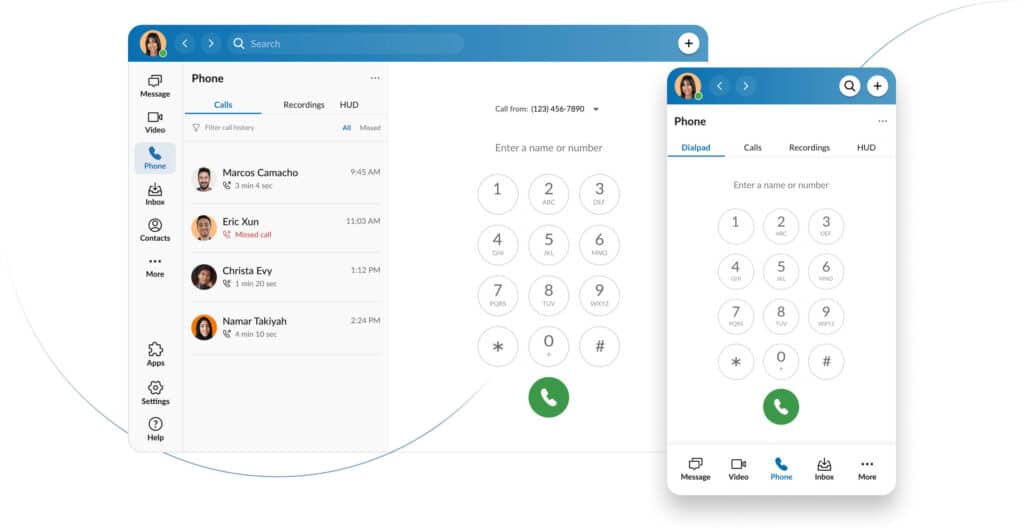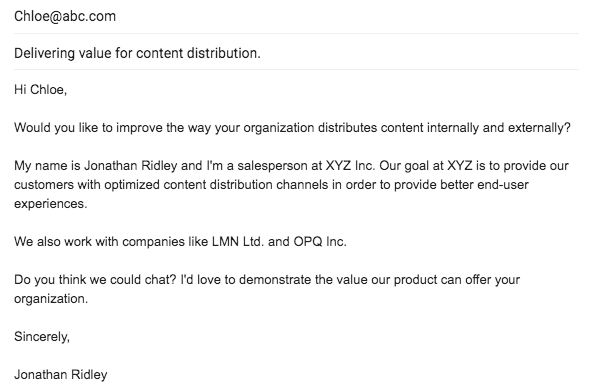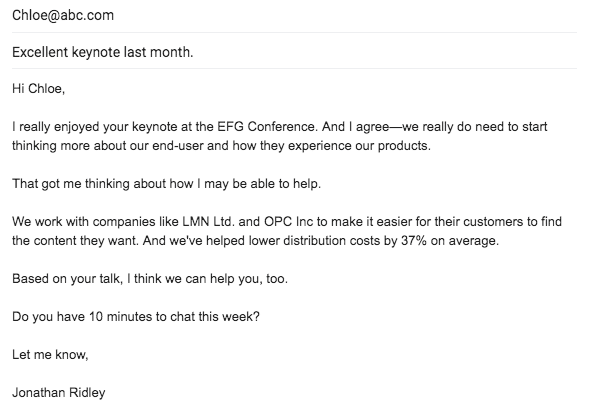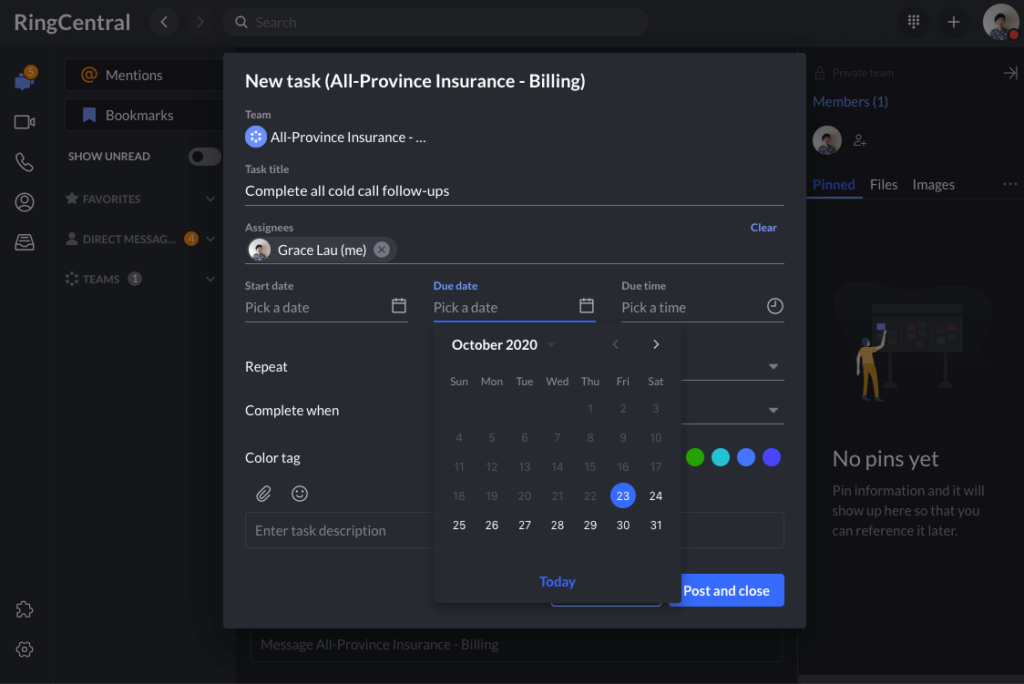Sales is one of the toughest roles in any company. Salespeople get rejected from prospects at a notoriously high rate, and if you’re managing SDRs who are responsible for making cold calls and cold emails, the job is even tougher.
But there are ways to succeed. According to LinkedIn, top-performing salespeople do more research—82% of top performers say they “always” perform research before reaching out to prospects (compared to just 49% for other sellers).
And when it comes to sales pitches, this becomes especially important. Not only do reps typically only get one shot at a pitch, it’s also the company’s only shot—if the prospect says, “No, thanks,” the company can’t just send another sales rep along to make another sales pitch in a week.
For a sales rep who’s pitching to a high-value prospect with a significant potential CLV (customer lifetime value) potential, making sure that sales pitch is as close to perfect as possible is crucial. So, how can they do that?
In this guide, we’re going to explore how to create a sales pitch that will leave prospects wanting to learn more instead of wanting to run away. We’re going to cover:
- What a sales pitch is
- 5 key elements of a successful pitch
- 6 sales pitch examples
- 6 tips to improve your pitches
🚀 Start closing more deals with this free outbound sales playbook.
What is a sales pitch?
A sales pitch is an attempt to persuade a prospective customer to buy a product or service. Generally, a good sales pitch identifies a problem or challenge the prospect has, acknowledges the issue, offers a solution through the product it’s selling, and supports it with proof. The pitch should make the value clear to the prospect.
What makes a good sales pitch?
Sales pitches can take on various forms and use different approaches. But when you break them down, they almost always have these five key elements (and it always helps to have good sales apps or cold-calling software and a Bluetooth headset if you’re going to be spending hours on calls.)
1. The open
The open is the introduction. It’s as simple as saying “Hello,” introducing yourself, and asking the prospect how they are. It’s also your first opportunity to start building rapport.
2. Identification of the problem, pain point, and/or goal
By asking a few different probing questions about their work, you’ll start getting a better understanding of what the prospect’s challenges and goals are.
AI tools can be a huge help here. Some sales communications platforms with built-in AI can not only transcribe your sales calls, but also summarize important points, update your CRM’s notes automatically, and tell you what topics or questions prospects are bringing up most frequently. For example, RingSenseTM for Sales does exactly this:
3. Demonstration of value
Once you’ve established rapport and begun to understand the scope of their needs, you can begin to address each one using your product as the solution. You should be able to speak to one or more of their pain points with how your product can solve the problem.
4. Supporting facts
If you want to build trust, you should be prepared to support your pitch with facts and figures. Consider using social proof, like positive results that show how you beat customer expectations or prove that your other customers got something out of using your product or service.
For example:
- “Our customers save an average of 37% a year on their annual maintenance bills.”
- “Similarly sized businesses have seen a full return on their investment in only three months.”
5. The close
By now, you should’ve clearly shown your prospect the value of your product and how it’s going to make their job or life easier. The close is essentially the point where they say, “Yes,” and the transaction occurs.
6 Sales pitch examples
There are countless ways you can pitch to a prospect. But you want to use the right kind of pitch at the right time and for the right customer. Below are six different ways to pitch, including an example of a sales pitch for each, why it works, and, for some examples, tips on when you shouldn’t use them.
Once you see exactly what good sales pitch examples involve, you’ll know exactly what to aim for to have the best chance at success.
1. The phone pitch
Believe it or not, the phone call is still the most popular and effective selling channel and with good reason: it’s fast, easy, happens in real time—and is much harder for your prospect to ignore.
One of the best sales pitch examples is when billionaire Mark Cuban purchased the Dallas Mavericks in the early 2000s. He bought the team at a discount because, frankly, they stank. They were rated the worst professional sports franchise of the ‘90s. Naturally, this led to low ticket sales.
So Mark got on the phone and started calling past season-ticket holders. And guess what? It worked.
Watch Mark Cuban tell the story about his best phone sales pitch in his own words.
Why did it work?
- He was friendly and built rapport with his prospects.
- He demonstrated value. (A game is less expensive than a meal at McDonald’s. Wowza.)
- He understood that he wasn’t selling a bad team—he was selling a memorable experience.
If you’re on a call with a prospect and hoping to have the same level of success as Mark Cuban, you may feel your pitch could benefit from showing the prospect something on your screen. How could you do that?
It’s pretty straightforward. There are tools that let you flip between a phone call and video call so that you can do screen sharing if that’s where the conversation takes you.
For example, you can do this easily in the free video call app provided by RingCentral (which actually has messaging, video conferencing, and a phone service all in one):

2. The email pitch
Done well, a good email sales pitch is probably the best tactic a rep has their disposal. In fact, C-level executives are 23% more likely to answer cold B2B emails than employees outside the C-suite
But to be successful at email sales pitches, your sales email subject lines have to be click-worthy.
Emails are a great way to introduce yourself and your company while demonstrating the value in what you’re selling. But it’s also easy to do poorly. For example, here is the wrong way to pitch via email:

Why this doesn’t work
- The email starts with a hyper-specific question that feels like it’s providing a solution to a problem no one has.
- The value proposition is poorly expressed. What is an optimized content-distribution channel? What are end-user experiences?
- The mention of other customers feels more like name-dropping than a good use of social proof. (There’s a better way to do this—see example below.)
- There’s no clear value demonstrated, so it’s very unlikely that Chloe will respond.
Here’s a better example from the same person at the same fictional company:

Why this works:
- The pitch starts with a shared experience. In this case, a conference—but it can be any commonality.
- Value is demonstrated clearly and immediately. There’s no ambiguity about what they’re selling and how it helps.
- Social proof is added tactfully.
- Benefits are supported by data.
- The salesperson doesn’t come on too strong.
3. The voicemail pitch
If you work in sales, you’re going to hit a lot of voicemail inboxes. And that’s okay, because successful deals often start with up to eight attempts to actually speak with your prospect.
So while hitting an inbox can feel like a miss, don’t be discouraged. It’s actually an opportunity to make an impression and plant a seed before your next attempt.
Example:
Hi [Prospect’s name],
This is [your name] calling from XYZ company. Sorry I missed you.
I was hoping to speak to you about [reason you’re calling]. We’ve helped other companies [insert benefit], and I think we may be able to help you get similar results.
You can reach me at [insert phone number] if you’d like to learn more. But I’ll follow up soon.
Why this works:
- It’s personalized and friendly.
- It doesn’t beat around the bush—the value prop is upfront and center.
- It supports the value prop with previous results.
- It’s short, which is important because otherwise there’s a very good chance the prospect won’t listen to the whole thing.
- It promises to follow up, which will not only make them expect to be contacted again but it will also mean that they’re more receptive to that.
And if you say you’re going to follow up within a certain time frame, do it!
The vast majority of deals don’t close in one go, and you have to be both persistent and organized in how you plan your follow-ups. If you know you have a lot of prospects to follow up with, create tasks for yourself (and your team).
For example, RingCentral’s desktop and mobile app allows you to not only create team chats for different projects or departments but you can also assign tasks with due dates, relevant files, and even color-coding for easy organization:
4. The deck pitch
If you’re invited to make a pitch, congratulations. It means you’ve got a foot in the door, you’re in front of a receptive audience, and half the work is already done. (Although there’s a good chance you did that work. So good job there, too.)
Of all the sales pitches examples, for this type, it’s crucial that you get your face-to-face communication spot on. And we’re not just talking about being able to rattle off the sales pitch script that you learned by heart. Your body language plays a big part in it too.
A pitch deck is basically a sales pitch in a presentation format—PowerPoint, Google Slides, or whichever presentation platform you use. This type of pitch makes it easy to tell a story and highlight key points using visual aids that can be very persuasive.
For example, check out this 13-page pitch deck from startup Castle that was used to raise $270k. (Fundraising is a type of sales too!)
Why it works:
- It states a clear problem that there really should be a solution for.
- It demonstrates how the product solves the problems using key metrics like the benefit to customers, growth, and trajectory.
- The messaging is clear and simple.
- The graphics help tell the story, sell the vision, and build brand awareness.
5. The elevator pitch
This type of pitch gets its name from the idea that you should be able to say it in the span of an elevator ride. A good elevator pitch explains what your product does in an extremely concise and effective way.
Take this often-cited example from G2 Crowd.
Why it works:
- Instead of repeating the product’s value proposition verbatim, the rep explains what the product does and why it’s useful in words that everyone can understand.
- It’s 21 seconds long—about half an elevator ride in New York City.
6. The follow-up pitch
It’s hard to close a customer on first contact. (Remember, it takes up to eight tries just to get a meeting.) So, focus on getting a shot at a second or third meeting where you’ll have a better understanding of each other and a better chance at closing the deal.
The key to a good follow-up pitch is to make it timely and relevant without being a bother.
A good way to do this is to mention a past point of contact or conversation (if you’ve had one).
For example:
“Hi [their name,]
It’s [your name] from [your company]. Last time we spoke, you mentioned [problem that the prospect experienced]. I’ve given it some thought, and I think I know how I might be able to help you [insert the benefit of your product, as it relates to their problem].”
From there, you can move the conversation forward. Or in the case of an email or voicemail, mention that you’ll follow up again and suggest a time to chat.
Why it works:
- The pitch refreshes their memory and provides context for the conversation.
- It highlights the problem they experienced and how you can solve it.
- It’s appropriate in any scenario—phone call, email, voicemail, or social message.
How to write a sales pitch to achieve optimal results
Now, let’s look at how to write an effective sales pitch. We’ve compiled a quick and easy guide to show you how to make a sales pitch that will refine your selling technique.
1. Have the right tools for the job
A phone system can’t pitch for you. But it can make pitching easier. Even better would be an AI-powered contact center platform that integrates with your customer relationship management (CRM) tool. For example, this is what RingCentral’s looks like:
This will let you make sales calls from your computer, log scripts, see your past conversations with all your accounts, and keep track of conversations you’re having with both prospects and customers. Some CRM tools like HubSpot provide AI tools to generate copy and cold emails to scale your campaigns. Bottom line: you need some kind of communications tool.
Shameless plug: RingCentral has a whole range of integrations with different CRMs including Agile CRM and Salesforce:

🕹️ Get a hands-on look at how top-performing sales teams are using RingCentral by booking a product tour:
2. Use data to support your claims
Any salesperson can make a big, impressive claim. But the most persuasive salespeople are the ones who can back their claims up with real numbers and customer stories.
Where possible, use data to support the benefits of your product. Proof is the most powerful tool in your sales arsenal.
3. Do your research
Gone are the days of picking up a phonebook and dialing prospects without knowing anything about them. Today, to even get a chance to pitch, you need to do your research first.
Use LinkedIn to learn more about your prospect. Know their company. Understand what they do. Look at the kind of content they’re posting. It can provide you with enough information to start a conversation worth having.
4. Use a conversation starter
Jumping right into a pitch probably won’t get you very far. Be friendly and build rapport with your prospect first to move from a “hello” efficiently into your pitch—without sounding too sales-y or coming on too strong.
5. Practice
You have to know your pitch to nail it. So put aside some time to really practice it. Try it out on coworkers. Run through it at home with your spouse. Sit in front of a mirror and pitch to yourself. Have a rebuttal for every objection. Knowing your product and your pitch inside and out is the key to being able to sell with confidence.
6. Talk about benefits, not features
This is the first rule in the book. Your product may have the best features in the world. But they don’t amount to much if they don’t solve your prospect’s problem. Focus on how the benefits of those features address prospects’ problems or pain points—and how they can help them reach their goals.
The benefits of a good sales pitch
When creating a sales pitch, it’s important to understand exactly how it could benefit your company so that you have reasonable expectations about what you’ll get out of it.
Sales pitch benefits are wide and varied, so let’s explore some of them to find out more:
1. Make you stand out from the crowd
Sales pitching can be a way for you to tell customers how your product or service beats that of the competition.
If your competitors are selling a similar product but yours has some unique features, make sure you emphasize this during your sales pitch. It’s a great way to entice prospects to buy from you and forget all about the competition.
2. Increase your brand awareness
It might be the case that some of your sales pitches will result in people hearing about your product or company for the first time.
So, approach each pitch with that in mind. Hopefully, it will ensure that you always deliver a top-notch pitch that will not only entice people who are already aware of you but also make a great first impression on those who aren’t.
Even better, they might tell their friends and family all about you, too!
3. Connect with prospects on an emotional level
We’re not suggesting you tell your potential customers a sob story to make them purchase your product because they feel sorry for you.
Instead, you should make it clear that you understand their pain points and what they need to solve them. That way, prospects will trust you, your company, and your product, which will hopefully result in them becoming loyal customers. That’s worth its weight in gold!
4. Increase your customer base and generate more sales
It goes without saying that the main aim of a sales pitch is to generate more sales and increase the number of people who buy from you. So, when a sales pitch has been done correctly, those are exactly the benefits that you’ll gain.
In addition, the more people you have purchasing from your business, the more feedback you’ll have on what you’ve been selling. If customers have left reviews mounting praise on particular products or services, you’ll know to keep doing as you were.
On the other hand, if clients have been writing reviews slating your offerings, you’ll know exactly what you need to change to ensure people keep buying from you.
What a great sales pitch comes down to…
Most prospects today are seasoned buyers. They know when they’re being pressured into a sale, and even if you do manage to close the deal, starting a business relationship on a sour note won’t be helpful in retaining that customer down the line.
When doing your sales pitch, keep that long-term customer relationship in mind. There are various ways that you can pitch a prospect, but the most important thing you can do is demonstrate value. Learn what the prospect is struggling with, empathize with them, understand their pain points, and find a way to help them overcome the problem that stands in their way.
By doing that, your prospects will see you as a valued and trusted partner rather than a vendor. And that’s going to make it easier for you to pitch—and close more deals.
Sales pitch FAQs
How does a sales pitch increase sales?
There are various ways in which a sales pitch can increase sales. When a salesperson knows how to start a sales pitch well, they can really pique a prospect’s attention and then provide relevant information about how the company’s product or service can solve their problems.
When combined with data and real-life stories about how the product or service has benefited customers, it helps build trust and sets the company apart from its competitors.
If a sales agent knows how to make a good sales pitch, they’ll not only provide information to back up their claims, but they’ll also empathize with the prospect, connecting with them on an emotional level.
Together, all of these elements convince the prospect that buying your product or service is in their best interests, thereby greatly increasing sales.
What are the components of a sales pitch?
Each sales pitch has various components, and it’s important to get each one right so that your overall pitch succeeds.
Components of a sales pitch include thorough research about your prospects’ possible pain points, an appropriate introduction, a strong value proposition, storytelling, social proof (people like to hear how others have benefited from your product or service), and unexpected value.
Finally, there’s the main goal of your pitch—the action you want your prospects to take next.
Originally published Jun 03, 2024, updated Jul 15, 2024






